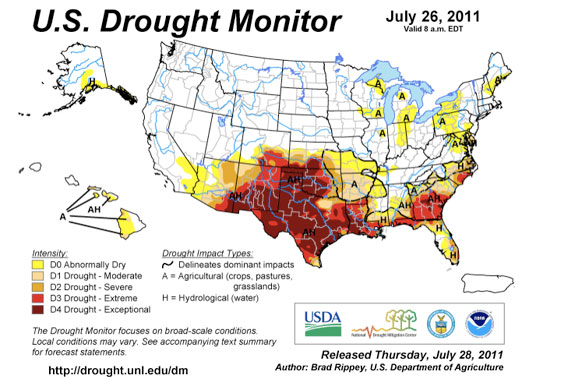Texas loses half a billion trees to epic drought

A punishing drought in Texas has not only damaged crops, killed cattle, and led to widespread fires, but has also killed off a significant portion of the state's trees: between 100 and 500 million trees have perished to drought stress according to preliminary analysis. The estimate does not include tree mortality caused by fires. The drought has been linked to La Niña conditions, which causes drying in the Southern U.S., and has likely been exacerbated by global climate change. In all around 10 percent of Texas' forests may have been lost to the drought—so far. Trees are expected to continue suffering and dying in Texas even if rain comes, however forecasters predict dry conditions will remain in Texas for another six months at least.
"This is a generational event," Barry Ward, executive director of Trees for Houston told Reuters. "Mature trees take 20 or 30 years to re-grow. This will make an aesthetic difference for decades to come."A recent study looking at tree ring data found that Texas had not seen a drought of this magnitude since 1789 when the territory was contested between the Spanish and Native Americans.
"[The drought] is basically off the charts. Based on past history, you wouldn’t expect to see this happening in maybe 500 or 1,000 years. One more year and we’re already talking about a drought more severe than anything we’ve ever had," Texas state climatologist, John Nielsen-Gammon, told CBS at the time.
A report in 2009 on expected climate change impacts in the Southwest region of the U.S. predicted increased drought and wildfires with negative impacts on agriculture and forests. Scientists say droughts like Texas' are increasingly becoming a combination of both natural variance and human impact, i.e. climate change.
"When a drought comes, often temperatures are already higher than they would have been 50 years ago and so the effects of the drought are magnified by higher evaporation rates," Texas climatologist Katherine Hayhoe explained to Climate Progress.